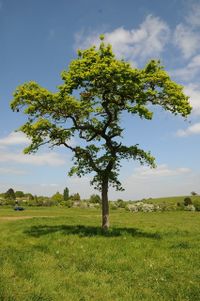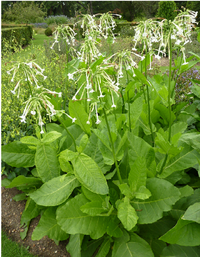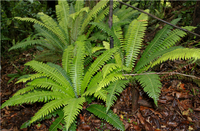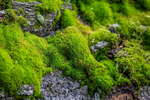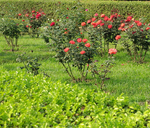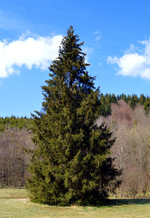Difference between revisions of "Plant"
(→Beyond the Curriculum) |
|||
| Line 77: | Line 77: | ||
| style="height:20px; width:150px; text-align:center;" |[[Fern]] | | style="height:20px; width:150px; text-align:center;" |[[Fern]] | ||
|} | |} | ||
| + | |||
| + | |||
| + | ===References=== | ||
| + | ====AQA==== | ||
| + | |||
| + | :[https://www.amazon.co.uk/gp/product/1782945563/ref=as_li_tl?ie=UTF8&camp=1634&creative=6738&creativeASIN=1782945563&linkCode=as2&tag=nrjc-21&linkId=9a1d023a374038e6072f33c4f3cf808b ''Plant; cells, page 11, GCSE Biology; The Revision Guide, CGP, AQA ''] | ||
| + | :[https://www.amazon.co.uk/gp/product/1782945563/ref=as_li_tl?ie=UTF8&camp=1634&creative=6738&creativeASIN=1782945563&linkCode=as2&tag=nrjc-21&linkId=9a1d023a374038e6072f33c4f3cf808b ''Plant; diseases, page 55, GCSE Biology; The Revision Guide, CGP, AQA ''] | ||
| + | :[https://www.amazon.co.uk/gp/product/1782945563/ref=as_li_tl?ie=UTF8&camp=1634&creative=6738&creativeASIN=1782945563&linkCode=as2&tag=nrjc-21&linkId=9a1d023a374038e6072f33c4f3cf808b ''Plant; growth, pages 81, 82, GCSE Biology; The Revision Guide, CGP, AQA ''] | ||
| + | :[https://www.amazon.co.uk/gp/product/1782945563/ref=as_li_tl?ie=UTF8&camp=1634&creative=6738&creativeASIN=1782945563&linkCode=as2&tag=nrjc-21&linkId=9a1d023a374038e6072f33c4f3cf808b ''Plant; hormones, pages 81, 82, GCSE Biology; The Revision Guide, CGP, AQA ''] | ||
| + | :[https://www.amazon.co.uk/gp/product/019835939X/ref=as_li_tl?ie=UTF8&camp=1634&creative=6738&creativeASIN=019835939X&linkCode=as2&tag=nrjc-21&linkId=57e96876985fc39b1a3d8a3e3dc238b6 ''Plants, pages 236-237, GCSE Physics; Third Edition, Oxford University Press, AQA ''] | ||
| + | :[https://www.amazon.co.uk/gp/product/1471851338/ref=as_li_tl?ie=UTF8&camp=1634&creative=6738&creativeASIN=1471851338&linkCode=as2&tag=nrjc-21&linkId=425855d5890466e47189e1c21b67a1ea ''Plants, pages 36, 67-77, 124-5, 202, GCSE Biology, Hodder, AQA ''] | ||
| + | :[https://www.amazon.co.uk/gp/product/0198359373/ref=as_li_tl?ie=UTF8&camp=1634&creative=6738&creativeASIN=0198359373&linkCode=as2&tag=nrjc-21&linkId=952a73bbb09d222ecc4b50d200679849 ''Plants; adaptations, pages 268, 272-273, GCSE Biology; Third Edition, Oxford University Press, AQA ''] | ||
| + | :[https://www.amazon.co.uk/gp/product/1471851338/ref=as_li_tl?ie=UTF8&camp=1634&creative=6738&creativeASIN=1471851338&linkCode=as2&tag=nrjc-21&linkId=425855d5890466e47189e1c21b67a1ea ''Plants; cells, pages 5-7, 23, GCSE Biology, Hodder, AQA ''] | ||
| + | :[https://www.amazon.co.uk/gp/product/0198359373/ref=as_li_tl?ie=UTF8&camp=1634&creative=6738&creativeASIN=0198359373&linkCode=as2&tag=nrjc-21&linkId=952a73bbb09d222ecc4b50d200679849 ''Plants; cloning, pages 29, 31, 179, 226, GCSE Biology; Third Edition, Oxford University Press, AQA ''] | ||
| + | :[https://www.amazon.co.uk/gp/product/1471851338/ref=as_li_tl?ie=UTF8&camp=1634&creative=6738&creativeASIN=1471851338&linkCode=as2&tag=nrjc-21&linkId=425855d5890466e47189e1c21b67a1ea ''Plants; competition, pages 236-7, GCSE Biology, Hodder, AQA ''] | ||
| + | :[https://www.amazon.co.uk/gp/product/1471851362/ref=as_li_tl?ie=UTF8&camp=1634&creative=6738&creativeASIN=1471851362&linkCode=as2&tag=nrjc-21&linkId=7d78d70a2044ee9982dae010c94af92a ''Plants; Competition, pages 75-6, GCSE Combined Science Trilogy 2, Hodder, AQA ''] | ||
| + | :[https://www.amazon.co.uk/gp/product/1471851338/ref=as_li_tl?ie=UTF8&camp=1634&creative=6738&creativeASIN=1471851338&linkCode=as2&tag=nrjc-21&linkId=425855d5890466e47189e1c21b67a1ea ''Plants; defence systems, page 106, GCSE Biology, Hodder, AQA ''] | ||
| + | :[https://www.amazon.co.uk/gp/product/0198359373/ref=as_li_tl?ie=UTF8&camp=1634&creative=6738&creativeASIN=0198359373&linkCode=as2&tag=nrjc-21&linkId=952a73bbb09d222ecc4b50d200679849 ''Plants; defences, pages 94-95, GCSE Biology; Third Edition, Oxford University Press, AQA ''] | ||
| + | :[https://www.amazon.co.uk/gp/product/1471851338/ref=as_li_tl?ie=UTF8&camp=1634&creative=6738&creativeASIN=1471851338&linkCode=as2&tag=nrjc-21&linkId=425855d5890466e47189e1c21b67a1ea ''Plants; diseases, pages 102-9, GCSE Biology, Hodder, AQA ''] | ||
| + | :[https://www.amazon.co.uk/gp/product/0198359373/ref=as_li_tl?ie=UTF8&camp=1634&creative=6738&creativeASIN=0198359373&linkCode=as2&tag=nrjc-21&linkId=952a73bbb09d222ecc4b50d200679849 ''Plants; diseases, pages 87, 92-95, GCSE Biology; Third Edition, Oxford University Press, AQA ''] | ||
| + | :[https://www.amazon.co.uk/gp/product/1471851362/ref=as_li_tl?ie=UTF8&camp=1634&creative=6738&creativeASIN=1471851362&linkCode=as2&tag=nrjc-21&linkId=7d78d70a2044ee9982dae010c94af92a ''Plants; Effects of abiotic factors, pages 78-9, GCSE Combined Science Trilogy 2, Hodder, AQA ''] | ||
| + | :[https://www.amazon.co.uk/gp/product/0198359373/ref=as_li_tl?ie=UTF8&camp=1634&creative=6738&creativeASIN=0198359373&linkCode=as2&tag=nrjc-21&linkId=952a73bbb09d222ecc4b50d200679849 ''Plants; genetic engineering, pages 224-225, 230-231, GCSE Biology; Third Edition, Oxford University Press, AQA ''] | ||
| + | :[https://www.amazon.co.uk/gp/product/1471851338/ref=as_li_tl?ie=UTF8&camp=1634&creative=6738&creativeASIN=1471851338&linkCode=as2&tag=nrjc-21&linkId=425855d5890466e47189e1c21b67a1ea ''Plants; hormones, pages 169-76, GCSE Biology, Hodder, AQA ''] | ||
| + | :[https://www.amazon.co.uk/gp/product/0198359373/ref=as_li_tl?ie=UTF8&camp=1634&creative=6738&creativeASIN=0198359373&linkCode=as2&tag=nrjc-21&linkId=952a73bbb09d222ecc4b50d200679849 ''Plants; hormones, pages 176-179, GCSE Biology; Third Edition, Oxford University Press, AQA ''] | ||
| + | :[https://www.amazon.co.uk/gp/product/1471851338/ref=as_li_tl?ie=UTF8&camp=1634&creative=6738&creativeASIN=1471851338&linkCode=as2&tag=nrjc-21&linkId=425855d5890466e47189e1c21b67a1ea ''Plants; organ systems, pages 71-2, GCSE Biology, Hodder, AQA ''] | ||
| + | :[https://www.amazon.co.uk/gp/product/0198359373/ref=as_li_tl?ie=UTF8&camp=1634&creative=6738&creativeASIN=0198359373&linkCode=as2&tag=nrjc-21&linkId=952a73bbb09d222ecc4b50d200679849 ''Plants; organs, pages 62-63, GCSE Biology; Third Edition, Oxford University Press, AQA ''] | ||
| + | :[https://www.amazon.co.uk/gp/product/1471851338/ref=as_li_tl?ie=UTF8&camp=1634&creative=6738&creativeASIN=1471851338&linkCode=as2&tag=nrjc-21&linkId=425855d5890466e47189e1c21b67a1ea ''Plants; organs, pages 70-1, GCSE Biology, Hodder, AQA ''] | ||
| + | :[https://www.amazon.co.uk/gp/product/0198359373/ref=as_li_tl?ie=UTF8&camp=1634&creative=6738&creativeASIN=0198359373&linkCode=as2&tag=nrjc-21&linkId=952a73bbb09d222ecc4b50d200679849 ''Plants; reproduction, pages 200-201, GCSE Biology; Third Edition, Oxford University Press, AQA ''] | ||
| + | :[https://www.amazon.co.uk/gp/product/0198359373/ref=as_li_tl?ie=UTF8&camp=1634&creative=6738&creativeASIN=0198359373&linkCode=as2&tag=nrjc-21&linkId=952a73bbb09d222ecc4b50d200679849 ''Plants; selective breeding, pages 222-223, GCSE Biology; Third Edition, Oxford University Press, AQA ''] | ||
| + | :[https://www.amazon.co.uk/gp/product/1471851338/ref=as_li_tl?ie=UTF8&camp=1634&creative=6738&creativeASIN=1471851338&linkCode=as2&tag=nrjc-21&linkId=425855d5890466e47189e1c21b67a1ea ''Plants; tissues, page 68-70, GCSE Biology, Hodder, AQA ''] | ||
| + | :[https://www.amazon.co.uk/gp/product/0198359373/ref=as_li_tl?ie=UTF8&camp=1634&creative=6738&creativeASIN=0198359373&linkCode=as2&tag=nrjc-21&linkId=952a73bbb09d222ecc4b50d200679849 ''Plants; transpiration, pages 66-69, GCSE Biology; Third Edition, Oxford University Press, AQA ''] | ||
| + | :[https://www.amazon.co.uk/gp/product/0198359373/ref=as_li_tl?ie=UTF8&camp=1634&creative=6738&creativeASIN=0198359373&linkCode=as2&tag=nrjc-21&linkId=952a73bbb09d222ecc4b50d200679849 ''Plants; transport, pages 12-13, 18-21, 23, 62-65, GCSE Biology; Third Edition, Oxford University Press, AQA ''] | ||
Revision as of 21:39, 10 November 2019
Contents
Key Stage 1
Meaning
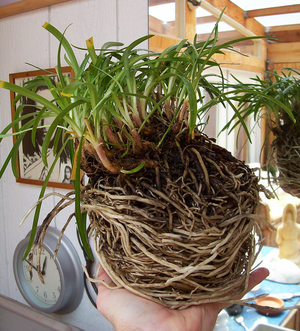
A plant with the roots showing.
A plant is a living thing that has roots and can make its own food.
About Plants
- Plants usually have a part of them that is green. Most often this is their leaves, but some plants have no leaves like a cactus.
- Some plants are wild and other plants are cultivated.
- We get fruits and vegetables from some plants but some plants have poisonous fruit that we can't eat.
Survival
- To survive a plant needs water, warmth and light.
- An adult plant will wilt if it does not get enough water and then it could die.
- An adult plant will die if it gets too cold and wilt and then die it if gets too hot.
- An adult plant will not be able to make its own food if there is not enough light so the plant will lose its leaves and go into a dormant state.
Germination
- When a seed is planted, if the conditions are right it will germinate and start to grow into an adult plant.
- If there is not enough water, and it is too cold or too hot, the seed will not germinate.
Examples
| A tree is a large plant with a woody trunk. | A flower only grows on flowering plants. |
| A fern is a plant that doesn't grow flowers. | Moss is a small soft plant that can't grow flowers. |
Note for Teachers
- Be careful not to suggest that plants get their food from the soil. Plants only get water and minerals from the soil. The majority of a plant is made using the Carbon Dioxide that the plant absorbed from the air.
- Mushrooms are often mistaken for vegetables which also leads children to falsely identify them as a plant. They are in fact a fungus.
Key Stage 3
Meaning
A plant is an organism that makes its own food.
About Plants
- Plants usually have a part of them that is green. Most often this is their leaves, but some plants have no leaves like a cactus.
- Some plants are wild and other plants are cultivated.
- We get fruits and vegetables from some plants but some plants have poisonous fruit that we can't eat.
Survival
- To survive a plant needs water, warmth and light.
- An adult plant will wilt if it does not get enough water and then it could die.
- An adult plant will die if it gets too cold and wilt and then die it if gets too hot.
- An adult plant will not be able to make its own food if there is not enough light so the plant will lose its leaves and go into a dormant state.
Germination
- When a seed is planted, if the conditions are right it will germinate and start to grow into an adult plant.
- If there is not enough water, and it is too cold or too hot, the seed will not germinate.
Classification of Plants
| Moss | Flowering Plants | Conifer | Fern |
References
AQA
- Plant; cells, page 11, GCSE Biology; The Revision Guide, CGP, AQA
- Plant; diseases, page 55, GCSE Biology; The Revision Guide, CGP, AQA
- Plant; growth, pages 81, 82, GCSE Biology; The Revision Guide, CGP, AQA
- Plant; hormones, pages 81, 82, GCSE Biology; The Revision Guide, CGP, AQA
- Plants, pages 236-237, GCSE Physics; Third Edition, Oxford University Press, AQA
- Plants, pages 36, 67-77, 124-5, 202, GCSE Biology, Hodder, AQA
- Plants; adaptations, pages 268, 272-273, GCSE Biology; Third Edition, Oxford University Press, AQA
- Plants; cells, pages 5-7, 23, GCSE Biology, Hodder, AQA
- Plants; cloning, pages 29, 31, 179, 226, GCSE Biology; Third Edition, Oxford University Press, AQA
- Plants; competition, pages 236-7, GCSE Biology, Hodder, AQA
- Plants; Competition, pages 75-6, GCSE Combined Science Trilogy 2, Hodder, AQA
- Plants; defence systems, page 106, GCSE Biology, Hodder, AQA
- Plants; defences, pages 94-95, GCSE Biology; Third Edition, Oxford University Press, AQA
- Plants; diseases, pages 102-9, GCSE Biology, Hodder, AQA
- Plants; diseases, pages 87, 92-95, GCSE Biology; Third Edition, Oxford University Press, AQA
- Plants; Effects of abiotic factors, pages 78-9, GCSE Combined Science Trilogy 2, Hodder, AQA
- Plants; genetic engineering, pages 224-225, 230-231, GCSE Biology; Third Edition, Oxford University Press, AQA
- Plants; hormones, pages 169-76, GCSE Biology, Hodder, AQA
- Plants; hormones, pages 176-179, GCSE Biology; Third Edition, Oxford University Press, AQA
- Plants; organ systems, pages 71-2, GCSE Biology, Hodder, AQA
- Plants; organs, pages 62-63, GCSE Biology; Third Edition, Oxford University Press, AQA
- Plants; organs, pages 70-1, GCSE Biology, Hodder, AQA
- Plants; reproduction, pages 200-201, GCSE Biology; Third Edition, Oxford University Press, AQA
- Plants; selective breeding, pages 222-223, GCSE Biology; Third Edition, Oxford University Press, AQA
- Plants; tissues, page 68-70, GCSE Biology, Hodder, AQA
- Plants; transpiration, pages 66-69, GCSE Biology; Third Edition, Oxford University Press, AQA
- Plants; transport, pages 12-13, 18-21, 23, 62-65, GCSE Biology; Third Edition, Oxford University Press, AQA
